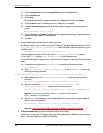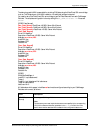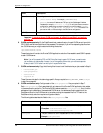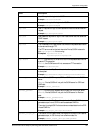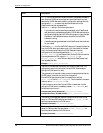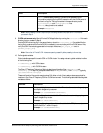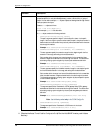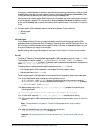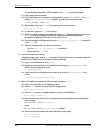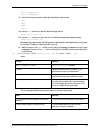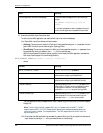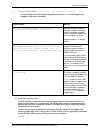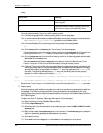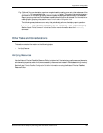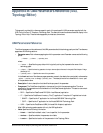
Appendix A: Configuration
450 Netcool/Proviso Cisco IP Telephony Technology Pack User’s Guide, Version 4.3-W
To manually add the pack-specific UBA parameters to the dc.cfg file, follow these steps:
12-f. Open a second terminal emulator.
12-g. On the DataChannel server, change your working directory to the DATA_CHANNEL_HOME/conf
directory (
/opt/datachannel/conf, by default), by entering the following command:
cd DATA_CHANNEL_HOME/conf
12-h. Make a backup copy of the dc.cfg file, by entering the following command:
cp dc.cfg dc.cfg.ORIG
12-i. In a text editor, open the dc.cfg file for editing.
12-j. Search for the UBA parameters, which begin with the string UBA. These parameters were written to the
dc.cfg file when you configured the UBA Bulk Collector and installed the DataChannel
configuration, as described in the Netcool/Proviso Installation Guide.
12-k. Copy the pack-specific UBA parameters from the voip_cisco_ipt_sample_dc.cfg template file
to the
dc.cfg file.
12-l. When you are satisfied with your edits, do the following:
— Quit the voip_cisco_ipt_sample_dc.cfg template file.
— Write and quit the
dc.cfg file.
13. Load the DataChannel environment.
In subsequent steps, you will execute dccmd commands. To ensure that you can run these commands, load
the shell with the DataChannel environment by following these steps:
13-a. Log in to the DataChannel server as pvuser.
13-b. Change your working directory to the DataChannel home directory (/opt/datachannel, by
default), using the following command:
cd /opt/datachannel
13-c. Load the shell with the DataChannel environment, by sourcing the dataChannel.env file, as
follows:
. /opt/datachannel/dataChannel.env
14. Restart the DataChannel to activate the UBA and read in changes to dc.cfg.
14-a. Open a terminal emulator on the DataChannel server.
14-b. Use the dccmd command to stop all DataChannel applications:
dccmd -action stop all
14-c. Use the dccmd command to release all daemons running in the DataChannel:
dccmd -action forget all
14-d. Use the following command to find the process identifiers (pids) associated with the DataChannel
visual processes:
DATA_CHANNEL_HOME/bin/findvisual
where:
DATA_CHANNEL_HOME is /opt/datachannel, by default.
14-e. Use the following commands to stop each DataChannel visual process:
kill -9 <cnsw_pid>
kill -9 <logw_pid>



